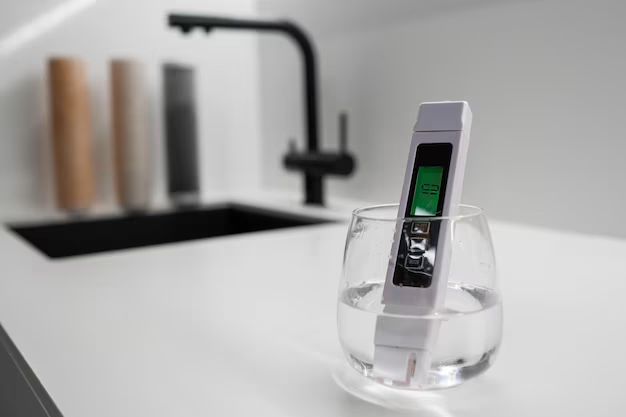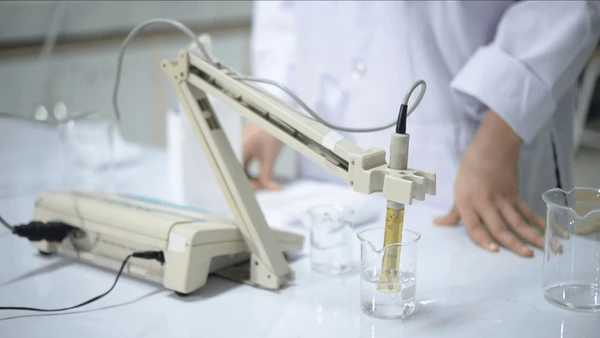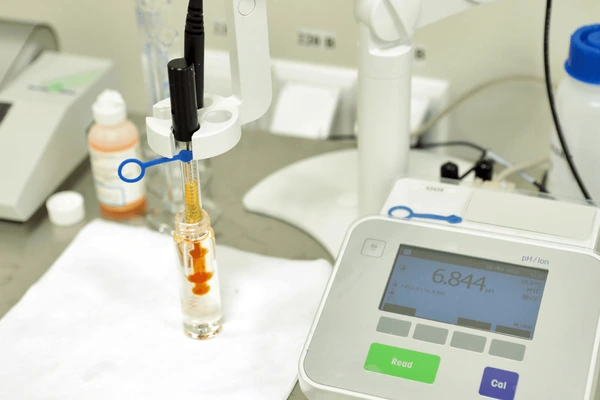Introduction:
A conductometer is an instrument used to measure the electrical conductivity of solutions, a key indicator of a solution’s ionic content. By measuring conductivity, scientists and researchers can determine properties such as the concentration of ions, the purity of water, or the behavior of electrolytes under various conditions. This article provides an in-depth look at how conductometers work, their types, applications, and why they are essential in scientific and industrial fields.

What is Conductivity?
Before delving into the conductometer, it’s important to understand electrical conductivity. Conductivity is the ability of a substance to allow the passage of electric current. In liquids, this conductivity is typically due to the presence of ions, which are charged particles. Pure water, for instance, has very low conductivity, but as salts or other ions are added, conductivity increases.
In a solution, cations (positively charged ions) and anions (negatively charged ions) move freely, enabling the conduction of electricity. Conductivity is influenced by several factors, including:
Concentration of ions: Higher ion concentration increases conductivity.
Temperature: Conductivity generally increases with temperature.
Type of ions: Different ions conduct electricity at different rates.
What is a Conductometer?
A conductometer is a specialized device used to measure the electrical conductivity of a liquid solution. It is commonly used in labs, industries, and research to assess the purity of water, the concentration of ionic substances, and the behavior of electrolytes.
Components of a Conductometer
A typical conductometer consists of:
- Electrodes: Usually made of materials such as platinum, the electrodes are placed in the solution to measure its conductivity.
- Power Supply: Provides a small, controlled voltage across the electrodes.
- Display Unit: Shows the measured conductivity, usually in units of Siemens per meter (S/m).
- Temperature Sensor: Some conductometers have built-in temperature sensors to account for temperature-dependent changes in conductivity.
How Does a Conductometer Work?
The conductometer works by applying an alternating current (AC) across two electrodes placed in the solution. The device then measures the current flowing through the solution, which is proportional to its conductivity. As the concentration of ions increases, the ability of the solution to conduct electricity improves, resulting in higher readings on the conductometer.
Calibration and Units
Conductometers are calibrated using standard solutions with known conductivity values. The typical unit of conductivity measurement is Siemens per meter (S/m) or micro siemens per centimeter (µS/cm) for lower conductivities.

Types of Conductometer:
Conductometers vary based on functionality, measurement range, and application:
- Basic Conductometers: Used for simple measurements of conductivity, often without temperature compensation. Suitable for general laboratory use.
- Benchtop Conductometers: These are more accurate and often used in labs for precise measurements. These include advanced features such as automatic temperature compensation.
- Portable Conductometers: Compact and battery-powered, ideal for field measurements, such as in environmental testing.
- Multiparameter Meters: Measure conductivity along with other parameters like pH, temperature, and dissolved oxygen. These are widely used in research and industrial applications.
Each type of conductometer is tailored for specific applications and environments, making the choice of device important depending on the requirements.
Applications of Conductometers:
Conductometers have a wide range of applications across various fields:
Water Quality Testing:
Conductometers are used to measure the purity of water. High conductivity may indicate contaminants like salts, metals, or organic compounds. They are particularly useful in monitoring drinking water, industrial wastewater, and environmental water sources.
Chemical Industry:
In chemical manufacturing, conductometers help monitor the concentration of reactants and products, especially when working with electrolytes or ionic solutions.
Food and Beverage Industry:
Conductometers assess water quality in beverages, ensuring consistency in taste and quality. They are also used to control salinity and other ionic properties in food processing.
Pharmaceutical Industry:
Conductivity measurement is crucial in maintaining the purity of water used in pharmaceuticals. Conductometers are also used in formulation processes that involve ionic compounds.
Environmental Monitoring:
Environmental agencies use conductometers to monitor natural water bodies for pollution and contamination levels. Conductivity data can indicate levels of dissolved ions, which helps assess ecological health.
Education and Research:
Conductometers are used in educational labs to teach students about electrolytes, conductivity, and properties of solutions. Researchers also use them to study chemical reactions and the behavior of ionic solutions under different conditions.

Factors Affecting Conductivity Measurements:
Conductivity measurements can be influenced by various external and internal factors, and understanding these is key to achieving accurate readings:
- Temperature: Conductivity generally increases with temperature. Most conductometers have automatic temperature compensation to correct for this effect.
- Electrode Fouling: Electrodes can get coated with residues, affecting accuracy. Regular cleaning and calibration are essential.
- Solution Composition: The type and concentration of ions affect conductivity. Mixtures of different ions can have non-linear effects on the readings.
- External Interference: External electromagnetic fields can sometimes interfere with conductivity measurements, especially in sensitive settings.
Advantages and Limitations of Conductometers:
Advantage:
Rapid Measurement: Conductometers provide instant readings, making them ideal for monitoring and quality control.
Versatile: They can measure various types of solutions across different industries.
Non-Destructive: Conductivity testing does not alter the sample, which is useful for multiple analyses on the same sample.
Limitations:
Interference from Temperature: While many conductometers compensate for temperature, extreme temperature fluctuations can still affect accuracy.
Limited Specificity: Conductometers measure total ionic content but cannot specify which ions are present.
Regular Calibration Required: To ensure accuracy, frequent calibration with standard solutions is necessary.
Maintenance and Best Practices for Using Conductometers:
For optimal performance, conductometers require regular maintenance:
- Calibration: Regular calibration with known standard solutions helps maintain accuracy.
- Cleaning the Electrodes: Electrodes should be cleaned to avoid build-up that can skew results.
- Storing Properly: Portable and benchtop conductometers should be stored in stable environments to protect the sensors and electrodes.
- Temperature Control: If working without automatic temperature compensation, temperature control is essential to avoid incorrect readings.
Conclusion:
The conductometer is a versatile and essential tool for measuring the conductivity of various solutions across multiple fields, from water quality testing to chemical manufacturing. Understanding its principles, types, and applications is essential for anyone involved in scientific or industrial processes that require precise conductivity measurements. With proper usage and regular maintenance, conductometers offer a reliable way to gather valuable data on the ionic properties of solutions.
By comprehending both its strengths and limitations, users can maximize the value of conductometers in their respective applications, ensuring accuracy and reliability in every measurement.